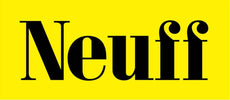
Young Athlete Development: Good Movements
BY BEN HAWKES
WHAT ARE THE FUNDAMENTAL ATHLETIC MOVEMENTS?
Good movement is whatever accomplishes the task you are performing and achieves the outcomes you desire from a drill or exercise. What we see, and coach is just about aligning those two things.

WHAT MOVEMENTS INCREASE ATHLETIC PERFORMANCE?
If our goal is simply to accomplish a task - for example, a squat - and we do that, we have good movement. Our bodies are incredible at adapting and compensating to make sure we can do what we tell them to do. But the magic lies in understanding how to dissociate parts of the body, coordinate into specific shapes, and accomplish tasks in a certain way.
This certain way needs to be determined beforehand, agreed upon by the coach and athlete, and centred around the desired outcomes. These outcomes could be to increase maximal force production, the direction of force production, movement velocity, or to change something about the positions we enter during a given movement.
Which of these you choose to target will be determined by the problem you’re trying to solve.

HOW DO YOU TRAIN FOR ATHLETIC PERFORMANCE?
Take, for example, a sprinter who wants to improve the acceleration portion of their race. The coach sees the athlete has a soft ankle which collapses on each step. This is not necessarily bad movement - they stay upright and complete every rep - but it’s not the fastest strategy. They must change their structures and technique to land with a stiffer ankle and transfer more force into the ground.
We can use a few different methods to change this movement. First, increasing the force generation capacity around the ankle. This is crucial - if we can’t produce force, we can’t create stability at the joint. To achieve this, we might use exercises like calf raises, tibialis raises, inversion/eversions, floating heel variations, or several isometric holds/pushes.
We would load these relatively heavy and work bilaterally and unilaterally (on two legs and one leg). We also want to encourage an explosive element in some exercises to bridge the gap from our maximal strength work to what we see on the track. This is, of course, in conjunction with a broader S&C programme. We would also look to use verbal cueing to find a word or phrase that encourages that stiff ankle.

Mostly though, we would look to use variations and other exercises to encourage the feeling of that stiff ankle. This might be a wall push, sled pulls, floating heel step-ups, or repeated plyometrics - both in a long-term programme and a warmup. This will encourage technical improvement and the ‘good movement’ we want to coach into the athlete.
You can see another example of this in the reel we’ve put together, where I go through a warmup series smoothing out some issues in my hips to allow me to squat better and perform my session with higher quality.

WHAT ARE THE 4 PRINCIPLES OF GOOD ATHLETIC MOVEMENTS?
To review, when we think about good movement, we need to think about:
- The task we are asking someone to complete
- The strategies we might want to guide athletes towards when achieving that movement
- The strategies athletes might use to complete the movement
- Training, warmup and coaching strategies we can use to encourage the movement we want to see
And good movement is simply what is most effective at accomplishing the task you have asked an athlete to perform.
Hopefully, you find these examples helpful, and I look forward to next month’s article, which will focus on the effect of growth and maturation in young athletes!
ABOUT BEN HAWKES

Ben is a hammer thrower who competes internationally for Great Britain and Northern Ireland and is also a sport massage therapist and strength and conditioning coach.
He has been writing content and producing videos for us for over a year, and his content focuses on hammer throwing tips and strength & conditioning guides for your athletic training!
Instagram: @benhawkes1
Twitter: @ben_hawkes1


Leave a comment